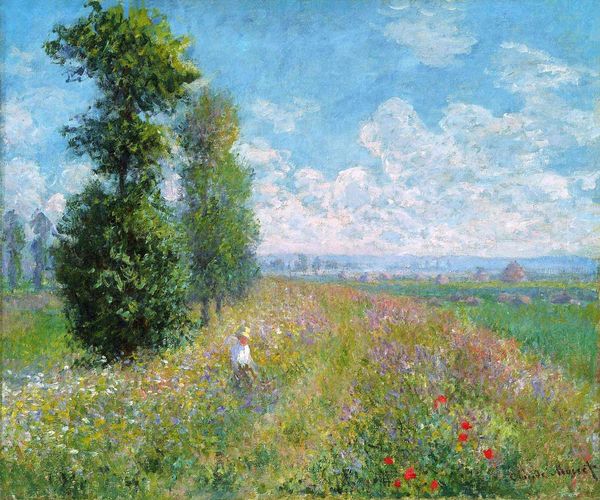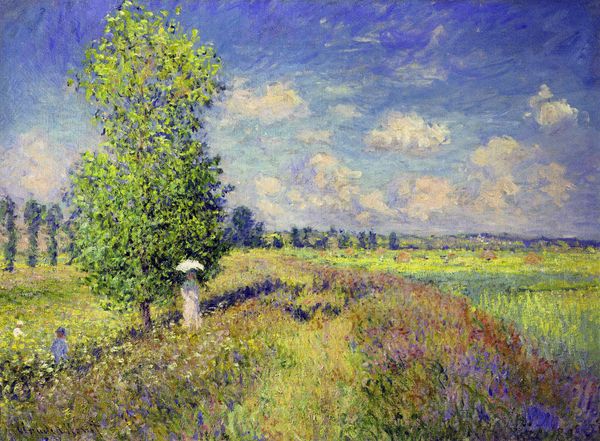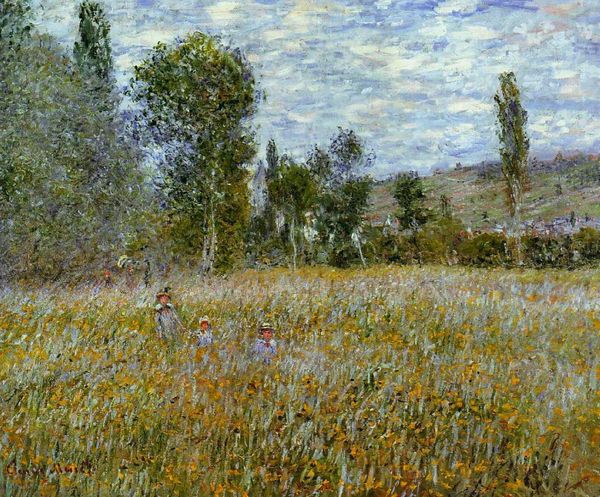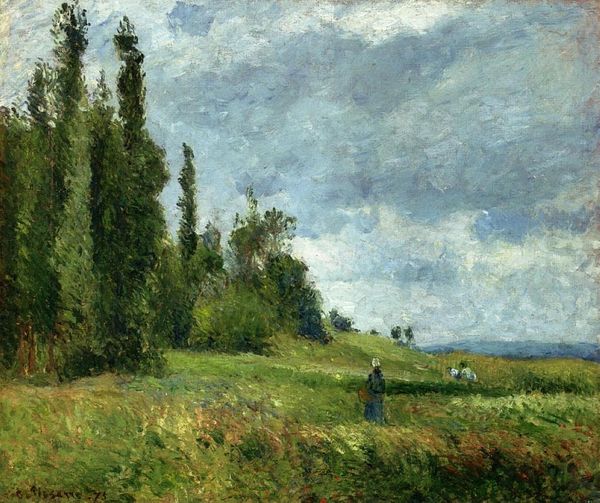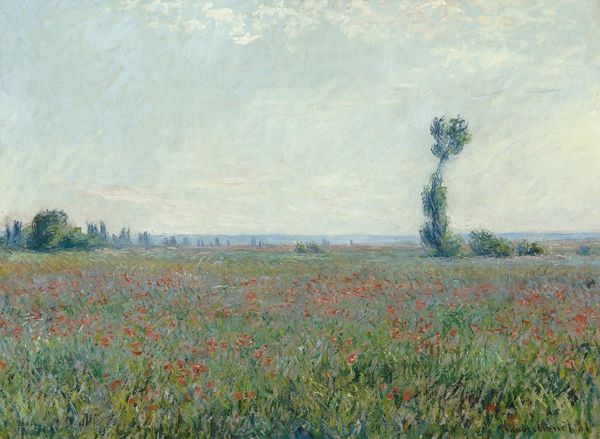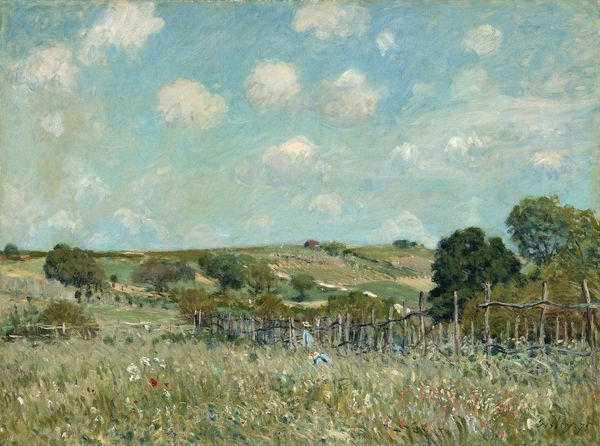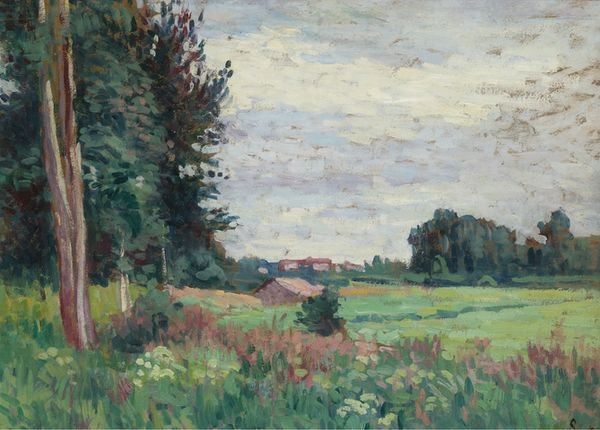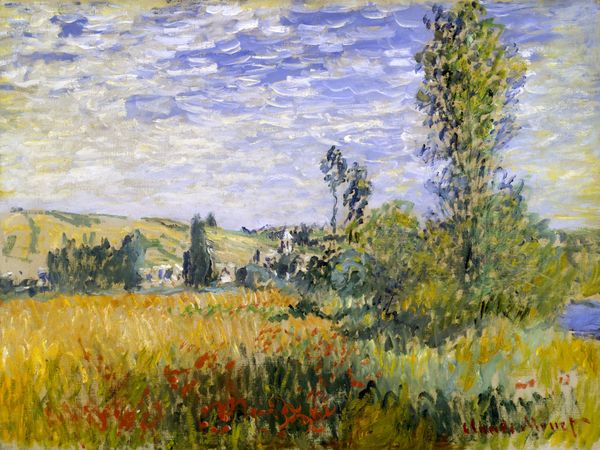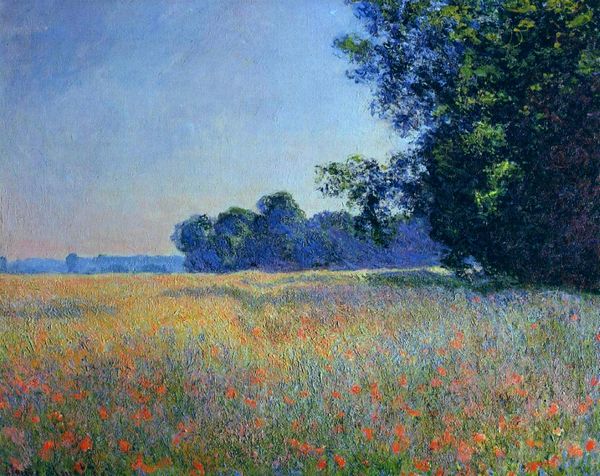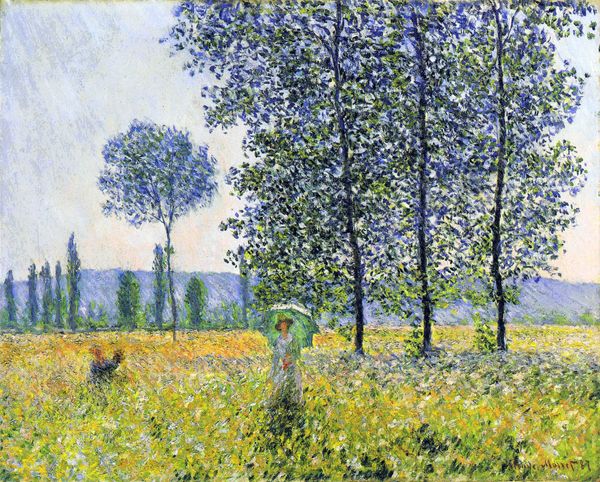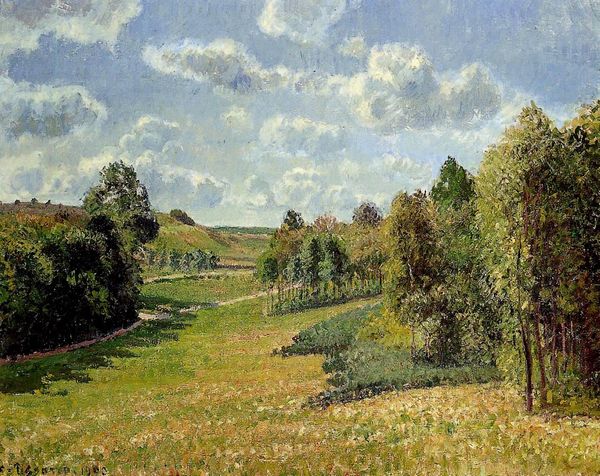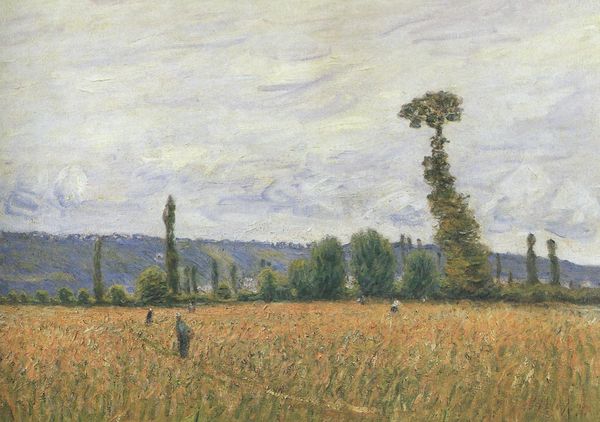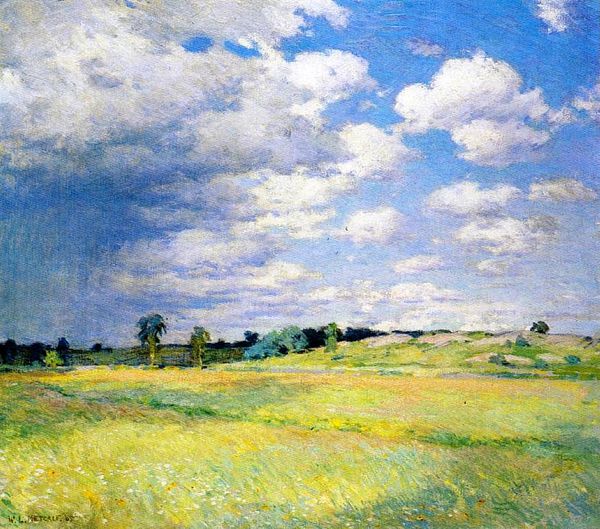
Copyright: Public domain
Editor: We're looking at "Poppy Field, Argenteuil," painted by Claude Monet in 1875, using oil paint. The vibrant reds and greens create a joyful and carefree scene. What's your perspective on this quintessential Impressionist work? Curator: Its compositional structure relies on a diagonal axis leading the eye into depth, counterbalanced by the verticality of the trees on the left. Notice how the figures are integrated within the landscape rather than dominating it; it’s not portraiture. Consider how Monet uses color—broken strokes of pure pigment, allowing optical mixing to occur in the viewer's eye. What effect do you think that has? Editor: It feels very immediate and captures the fleeting moment, like a snapshot. So, you're focusing on the technique rather than, say, the narrative elements? Curator: Precisely. While the subject matter - a field of poppies and strolling figures - evokes a certain sentiment, the painting is more fundamentally about the act of seeing and representing light and color. How does Monet's use of impasto – the thick application of paint – contribute to this? Editor: It adds texture and physicality, heightening the sense of light shimmering across the surface. You're making me think about how the materiality itself communicates. Curator: Precisely. The painting becomes less about ‘what’ is depicted and more about ‘how’ it’s depicted. The focus shifts from representation to presentation. It highlights the importance of observation. What have you observed that we haven't mentioned? Editor: I hadn’t considered the use of impasto so deliberately before. It makes the whole field feel alive and tactile. Curator: Indeed. By focusing on the formal elements, we can move beyond simple appreciation to a deeper understanding of Monet's artistic project and its significance. Editor: That’s so interesting, looking at art with such an analytical, material-focused lens has opened a whole new avenue of analysis for me. Curator: My pleasure. This painting serves as a great primer into the building blocks of what became a seismic artistic revolution.
Comments
No comments
Be the first to comment and join the conversation on the ultimate creative platform.
